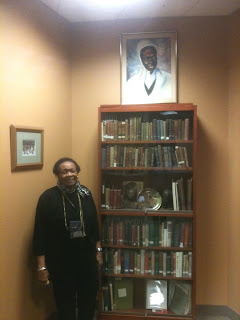I’ve expanded my record stripping to include all five counties (Caroline, Dorchester , Kent , Queen Anne’s, and Talbot) of the Eastern Shore that are covered in the U.S. Department of Education grant. Interesting individuals that I’ve encountered so far and are potential case studies:
- Samuel Harrison, a wealthy landowner and slave owner in Talbot County
- A couple of cases of freed slaves whose manumissions were conditional on their emigrating to Liberia
- Ebenezer Welch, a slave owner in Kent County
- James A. Jones, an African American butcher from Kent County
I’ve found many heartbreaking cases but the case of the boy Asbury is particularly sad because poor records management was the cause. Robert Butler of Queen Anne’s County gradually freed his slaves in his will, stating the date that each was to be free. However, in the case of Asbury, Butler’s will was torn in the space that specified Asbury’s term of service, leaving it as 18?7.
As a result:
Transcription: “Note: The Administrator feels himself at a loss to know the exact time of service of Negro Asbury, last the will of the testator was so badly defaced and torn that the figure between 8 and 7 was entirely obliterated and he has substituted the figure six as the most probable.”
The administrator may have guessed correctly, or may even have shortened Asbury’s term of service. Yet, it is unfortunate that his time in servitude had to be decided so arbitrarily due to a hole in paper.*
* Maryland State Archives Special Collections (Maryland State Colonization Society Papers) Extract of the will of Robert Butler,1834. MSA SC 5977, Reel 13249 p. 19. (http://mdhistory.net/msa_sc5977/scm013249/pdf/msa_sc5977_scm13249-0019.pdf)














